Ditapis dengan

Bulk commodity logistics
- Edisi
- 02 Mar 2017; 441-454
- ISBN/ISSN
- -
- Deskripsi Fisik
- 15 p.
- Judul Seri
- Handbook of Logistics and Supply-Chain Management
- No. Panggil
- ATC LO TRA b
- Edisi
- 02 Mar 2017; 441-454
- ISBN/ISSN
- -
- Deskripsi Fisik
- 15 p.
- Judul Seri
- Handbook of Logistics and Supply-Chain Management
- No. Panggil
- ATC LO TRA b

Maritime logistics in EU green ports and short sea shipping
- Edisi
- -
- ISBN/ISSN
- 978-1-78052-340-8
- Deskripsi Fisik
- 19 p.
- Judul Seri
- Maritime Logistics
- No. Panggil
- ATC MR GOU m
- Edisi
- -
- ISBN/ISSN
- 978-1-78052-340-8
- Deskripsi Fisik
- 19 p.
- Judul Seri
- Maritime Logistics
- No. Panggil
- ATC MR GOU m

A cold chain network for food exports to developing countries
- Edisi
- Vol. 33 No. 10, 2003 pp. 918-933
- ISBN/ISSN
- 0960-0035
- Deskripsi Fisik
- 16 p.
- Judul Seri
- International Journal of Physical Distribution & Logistics Management
- No. Panggil
- ATC LO SAL c
- Edisi
- Vol. 33 No. 10, 2003 pp. 918-933
- ISBN/ISSN
- 0960-0035
- Deskripsi Fisik
- 16 p.
- Judul Seri
- International Journal of Physical Distribution & Logistics Management
- No. Panggil
- ATC LO SAL c

A new risk assessment model for agricultural products cold chain logistics
- Edisi
- Vol. 117 Issue: 9, pp.1800-1816
- ISBN/ISSN
- -
- Deskripsi Fisik
- 19 p.
- Judul Seri
- Industrial Management & Data Systems
- No. Panggil
- ATC LO ZHA n
- Edisi
- Vol. 117 Issue: 9, pp.1800-1816
- ISBN/ISSN
- -
- Deskripsi Fisik
- 19 p.
- Judul Seri
- Industrial Management & Data Systems
- No. Panggil
- ATC LO ZHA n
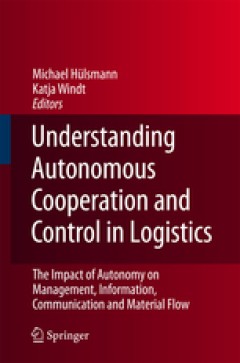
Understanding autonomous cooperation and control in logistics
- Edisi
- -
- ISBN/ISSN
- 978-3-540-47449-4
- Deskripsi Fisik
- xxviii, 217 p.
- Judul Seri
- -
- No. Panggil
- TXT LO HUL u
- Edisi
- -
- ISBN/ISSN
- 978-3-540-47449-4
- Deskripsi Fisik
- xxviii, 217 p.
- Judul Seri
- -
- No. Panggil
- TXT LO HUL u

4th Parti Cyber Logistics for Air Cargo
- Edisi
- -
- ISBN/ISSN
- 1-4020-7801-3
- Deskripsi Fisik
- xii, 163 p.
- Judul Seri
- -
- No. Panggil
- TXT LO CHU p
- Edisi
- -
- ISBN/ISSN
- 1-4020-7801-3
- Deskripsi Fisik
- xii, 163 p.
- Judul Seri
- -
- No. Panggil
- TXT LO CHU p
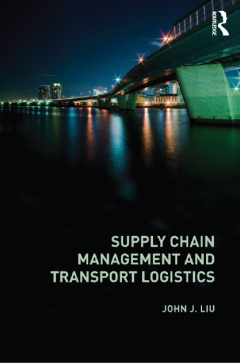
Supply chain management and transport logistics
- Edisi
- -
- ISBN/ISSN
- 978–0–203–80586–2
- Deskripsi Fisik
- -
- Judul Seri
- -
- No. Panggil
- TXT LO LIU s
- Edisi
- -
- ISBN/ISSN
- 978–0–203–80586–2
- Deskripsi Fisik
- -
- Judul Seri
- -
- No. Panggil
- TXT LO LIU s
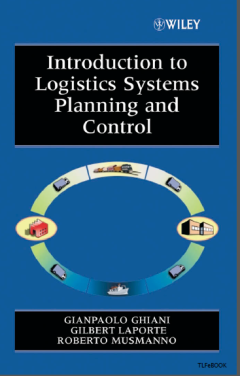
Introduction to logistics systems planning and control
- Edisi
- -
- ISBN/ISSN
- 0-470-84917-7
- Deskripsi Fisik
- -
- Judul Seri
- -
- No. Panggil
- TXT LO GHI i
- Edisi
- -
- ISBN/ISSN
- 0-470-84917-7
- Deskripsi Fisik
- -
- Judul Seri
- -
- No. Panggil
- TXT LO GHI i
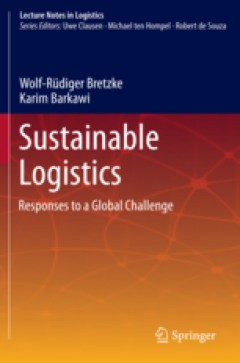
Sustainable logistics: responses to a global challenge
- Edisi
- -
- ISBN/ISSN
- 978-3-642-34375-9
- Deskripsi Fisik
- -
- Judul Seri
- -
- No. Panggil
- TXT LO BRE s
- Edisi
- -
- ISBN/ISSN
- 978-3-642-34375-9
- Deskripsi Fisik
- -
- Judul Seri
- -
- No. Panggil
- TXT LO BRE s
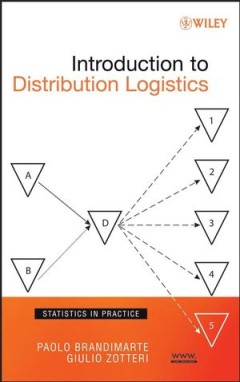
Introduction to distribution logistics
- Edisi
- -
- ISBN/ISSN
- 978-0-471-75044-4
- Deskripsi Fisik
- -
- Judul Seri
- -
- No. Panggil
- TXT LO BRA i
- Edisi
- -
- ISBN/ISSN
- 978-0-471-75044-4
- Deskripsi Fisik
- -
- Judul Seri
- -
- No. Panggil
- TXT LO BRA i
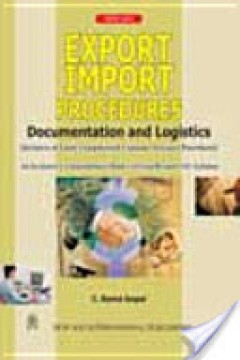
Export import procedures : documentation and logistics
- Edisi
- -
- ISBN/ISSN
- 978-81-224-2326-6
- Deskripsi Fisik
- vii, 232 p.
- Judul Seri
- -
- No. Panggil
- TXT LO GOP e
- Edisi
- -
- ISBN/ISSN
- 978-81-224-2326-6
- Deskripsi Fisik
- vii, 232 p.
- Judul Seri
- -
- No. Panggil
- TXT LO GOP e

Evaluation method of energy consumption in logistic warehouse systems
- Edisi
- -
- ISBN/ISSN
- 978-3-319-22044-4
- Deskripsi Fisik
- xviii, 158 p.
- Judul Seri
- -
- No. Panggil
- TXT LO ZAJ e
- Edisi
- -
- ISBN/ISSN
- 978-3-319-22044-4
- Deskripsi Fisik
- xviii, 158 p.
- Judul Seri
- -
- No. Panggil
- TXT LO ZAJ e

Adaptive search and the management of logistic systems
- Edisi
- -
- ISBN/ISSN
- 978-1-4419-8742-6
- Deskripsi Fisik
- -
- Judul Seri
- -
- No. Panggil
- TXT MG BIE a
- Edisi
- -
- ISBN/ISSN
- 978-1-4419-8742-6
- Deskripsi Fisik
- -
- Judul Seri
- -
- No. Panggil
- TXT MG BIE a
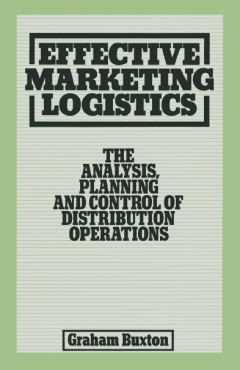
Effective marketing logistics: the analysis, planning and control of distribu…
- Edisi
- -
- ISBN/ISSN
- 978-1-349-02101-7
- Deskripsi Fisik
- -
- Judul Seri
- -
- No. Panggil
- TXT LO BUX e
- Edisi
- -
- ISBN/ISSN
- 978-1-349-02101-7
- Deskripsi Fisik
- -
- Judul Seri
- -
- No. Panggil
- TXT LO BUX e

the Palgrave handbook of humanitarian logistics and supply chain management
- Edisi
- -
- ISBN/ISSN
- 978-1-137-59099-2
- Deskripsi Fisik
- -
- Judul Seri
- -
- No. Panggil
- TXT LO KOV p
- Edisi
- -
- ISBN/ISSN
- 978-1-137-59099-2
- Deskripsi Fisik
- -
- Judul Seri
- -
- No. Panggil
- TXT LO KOV p

Port-focal logistics and global supply chains
- Edisi
- -
- ISBN/ISSN
- 978-1-137-27369-7
- Deskripsi Fisik
- xx, 240 p.
- Judul Seri
- -
- No. Panggil
- TXT LO ADO p
- Edisi
- -
- ISBN/ISSN
- 978-1-137-27369-7
- Deskripsi Fisik
- xx, 240 p.
- Judul Seri
- -
- No. Panggil
- TXT LO ADO p

Marketing logistics
- Edisi
- 2
- ISBN/ISSN
- 0-7506-5224-1
- Deskripsi Fisik
- -
- Judul Seri
- -
- No. Panggil
- TXT LO PEC m
- Edisi
- 2
- ISBN/ISSN
- 0-7506-5224-1
- Deskripsi Fisik
- -
- Judul Seri
- -
- No. Panggil
- TXT LO PEC m
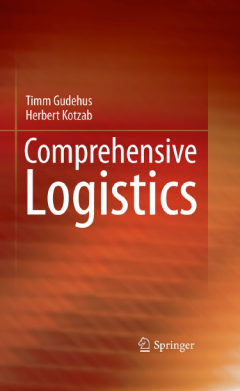
Comprehensive logistics
- Edisi
- -
- ISBN/ISSN
- 978-3-540-68652-1
- Deskripsi Fisik
- -
- Judul Seri
- -
- No. Panggil
- TXT LO KOT c
- Edisi
- -
- ISBN/ISSN
- 978-3-540-68652-1
- Deskripsi Fisik
- -
- Judul Seri
- -
- No. Panggil
- TXT LO KOT c

Seaports in international law
- Edisi
- -
- ISBN/ISSN
- 978-3-319-60396-4
- Deskripsi Fisik
- -
- Judul Seri
- -
- No. Panggil
- TXT MR CAS s
- Edisi
- -
- ISBN/ISSN
- 978-3-319-60396-4
- Deskripsi Fisik
- -
- Judul Seri
- -
- No. Panggil
- TXT MR CAS s
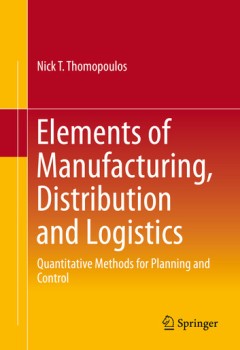
Elements of danufacturing, distribution and logistics: quantitative methods f…
- Edisi
- -
- ISBN/ISSN
- 978-3-319-26862-0
- Deskripsi Fisik
- -
- Judul Seri
- -
- No. Panggil
- TXT LO THO e
- Edisi
- -
- ISBN/ISSN
- 978-3-319-26862-0
- Deskripsi Fisik
- -
- Judul Seri
- -
- No. Panggil
- TXT LO THO e
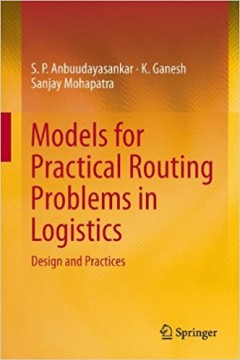
Models for practical routing problems in logistics: design and practice
- Edisi
- -
- ISBN/ISSN
- 978-3-319-05035-5
- Deskripsi Fisik
- -
- Judul Seri
- -
- No. Panggil
- TXT LO ANB m
- Edisi
- -
- ISBN/ISSN
- 978-3-319-05035-5
- Deskripsi Fisik
- -
- Judul Seri
- -
- No. Panggil
- TXT LO ANB m
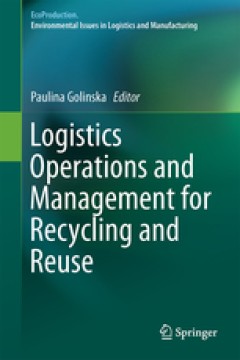
Logistics operations, supply chain management and sustainability
- Edisi
- -
- ISBN/ISSN
- 978-3-319-07287-6
- Deskripsi Fisik
- -
- Judul Seri
- -
- No. Panggil
- TXT LO Gol l
- Edisi
- -
- ISBN/ISSN
- 978-3-319-07287-6
- Deskripsi Fisik
- -
- Judul Seri
- -
- No. Panggil
- TXT LO Gol l
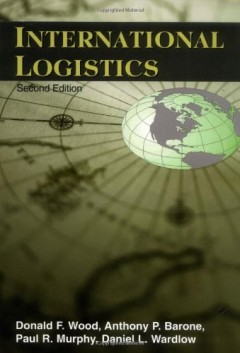
International logistics
- Edisi
- -
- ISBN/ISSN
- 978-1-4615-2085-6
- Deskripsi Fisik
- -
- Judul Seri
- -
- No. Panggil
- TXT LO Woo i
- Edisi
- -
- ISBN/ISSN
- 978-1-4615-2085-6
- Deskripsi Fisik
- -
- Judul Seri
- -
- No. Panggil
- TXT LO Woo i
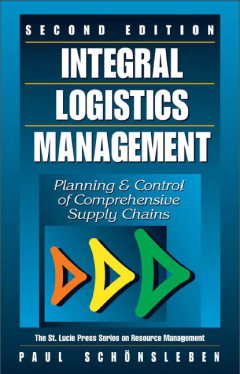
Integral logistics management: planning and control of comprehensive supply c…
- Edisi
- -
- ISBN/ISSN
- 1-57444-355-0
- Deskripsi Fisik
- -
- Judul Seri
- -
- No. Panggil
- TXT LO Sch i
- Edisi
- -
- ISBN/ISSN
- 1-57444-355-0
- Deskripsi Fisik
- -
- Judul Seri
- -
- No. Panggil
- TXT LO Sch i
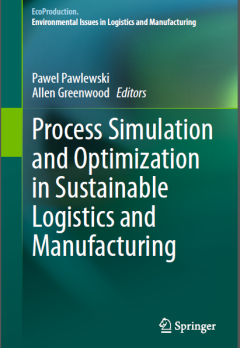
Process simulation and optimization in sustainable logistics and manufacturing
- Edisi
- -
- ISBN/ISSN
- 978-3-319-07347-7
- Deskripsi Fisik
- -
- Judul Seri
- -
- No. Panggil
- TXT LO Paw p
- Edisi
- -
- ISBN/ISSN
- 978-3-319-07347-7
- Deskripsi Fisik
- -
- Judul Seri
- -
- No. Panggil
- TXT LO Paw p
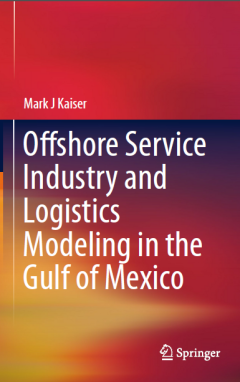
Offshore service industry and logistics modeling in the gulf of mexico
- Edisi
- -
- ISBN/ISSN
- 978-3-319-17013-8
- Deskripsi Fisik
- -
- Judul Seri
- -
- No. Panggil
- TXT LO Kai o
- Edisi
- -
- ISBN/ISSN
- 978-3-319-17013-8
- Deskripsi Fisik
- -
- Judul Seri
- -
- No. Panggil
- TXT LO Kai o
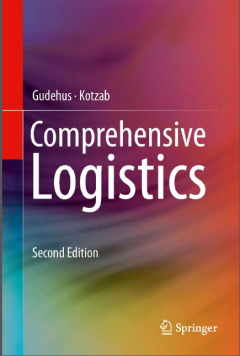
Comprehensive logistics
- Edisi
- -
- ISBN/ISSN
- 978-3-642-24367-7
- Deskripsi Fisik
- -
- Judul Seri
- -
- No. Panggil
- TXT LO Gud c
- Edisi
- -
- ISBN/ISSN
- 978-3-642-24367-7
- Deskripsi Fisik
- -
- Judul Seri
- -
- No. Panggil
- TXT LO Gud c
Multi-criteria decision making in maritime studies and logistics : applicatio…
- Edisi
- -
- ISBN/ISSN
- 978-3-319-62338-2
- Deskripsi Fisik
- xix, 363 p.
- Judul Seri
- -
- No. Panggil
- TXT MR LEE m
- Edisi
- -
- ISBN/ISSN
- 978-3-319-62338-2
- Deskripsi Fisik
- xix, 363 p.
- Judul Seri
- -
- No. Panggil
- TXT MR LEE m

Green shipping management
- Edisi
- -
- ISBN/ISSN
- 978-3-319-26482-0
- Deskripsi Fisik
- viii, 133 p.
- Judul Seri
- -
- No. Panggil
- TXT MG LUN g
- Edisi
- -
- ISBN/ISSN
- 978-3-319-26482-0
- Deskripsi Fisik
- viii, 133 p.
- Judul Seri
- -
- No. Panggil
- TXT MG LUN g
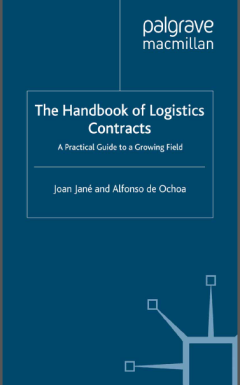
The handbook of logistics contracts: a practical guide to growing field
- Edisi
- -
- ISBN/ISSN
- 978-0-230-59758-7
- Deskripsi Fisik
- -
- Judul Seri
- -
- No. Panggil
- TXT LO Jan t
- Edisi
- -
- ISBN/ISSN
- 978-0-230-59758-7
- Deskripsi Fisik
- -
- Judul Seri
- -
- No. Panggil
- TXT LO Jan t
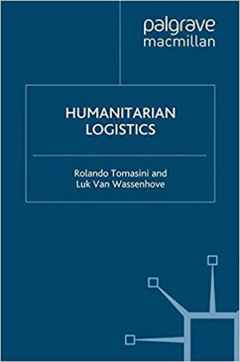
Humanitarian logistics
- Edisi
- -
- ISBN/ISSN
- 978-0-230-23348-5
- Deskripsi Fisik
- -
- Judul Seri
- -
- No. Panggil
- TXT LO Tom h
- Edisi
- -
- ISBN/ISSN
- 978-0-230-23348-5
- Deskripsi Fisik
- -
- Judul Seri
- -
- No. Panggil
- TXT LO Tom h

A Framework for Applying Logistical Segmentation
- Edisi
- Vol. 24 Iss 10 pp
- ISBN/ISSN
- -
- Deskripsi Fisik
- 9 p
- Judul Seri
- International Journal of Physical Distribution & Logistics Management
- No. Panggil
- ATC LO MUR a
- Edisi
- Vol. 24 Iss 10 pp
- ISBN/ISSN
- -
- Deskripsi Fisik
- 9 p
- Judul Seri
- International Journal of Physical Distribution & Logistics Management
- No. Panggil
- ATC LO MUR a
Indonesian-french seminar logistics and cold chain
- Edisi
- -
- ISBN/ISSN
- -
- Deskripsi Fisik
- 24 pages
- Judul Seri
- -
- No. Panggil
- PPT PO ELV i
- Edisi
- -
- ISBN/ISSN
- -
- Deskripsi Fisik
- 24 pages
- Judul Seri
- -
- No. Panggil
- PPT PO ELV i
Developing modern ports to increase Indonesia's competitiveness
- Edisi
- Regional Governments Conference 9-11 November 2016
- ISBN/ISSN
- -
- Deskripsi Fisik
- 35 page
- Judul Seri
- -
- No. Panggil
- PPT PO ELV d
- Edisi
- Regional Governments Conference 9-11 November 2016
- ISBN/ISSN
- -
- Deskripsi Fisik
- 35 page
- Judul Seri
- -
- No. Panggil
- PPT PO ELV d

Supply chain interfaces between a port utilizing organisation and port operator
This research revolves around understanding the interfaces of ports in supply chains. The main aim of the research is to explore the role of ports within supply chains.
- Edisi
- Volume 19 · Number 1 · 2014 · 79–97
- ISBN/ISSN
- -
- Deskripsi Fisik
- 21 p .
- Judul Seri
- Supply Chain Management: An International Journal
- No. Panggil
- ATC LO BEN s

The moderating role of supply network structure on the customer integration-e…
The purpose of this paper is to study whether a fast supply network structure interacts with customer integration (CI) by positively moderating the relationship between CI and efficiency performance.
- Edisi
- Vol. 33 No. 4, 2013
- ISBN/ISSN
- -
- Deskripsi Fisik
- 24 p.
- Judul Seri
- International Journal of Operations & Production Management
- No. Panggil
- ATC LO DAN t

Challenges to logistics development: the case of a Third World country – Ba…
The past two decades have witnessed a number of important developments in the world business affecting business firms in both developed and less developed countries (LDCs). A relentless search for the “best” possible mix of inputs such as cheap labour, raw materials, and energy, among others, by many advanced country corporations, has resulted in the decoupling of comparative advantages fro…
- Edisi
- Vol. 27 No. 1, 1997
- ISBN/ISSN
- -
- Deskripsi Fisik
- 23 p.
- Judul Seri
- International Journal of Physical Distribution & Logistics Management
- No. Panggil
- ATC LO ABD c

Container terminal operation and operations research – a classification and…
In the last four decades the container as an essential part of a unitload- concept has achieved undoubted importance in international sea freight transportation. With ever increasing containerization the number of seaport container terminals and competition among them have become quite remarkable. Operations are nowadays unthinkable without effective and efficient use of information technology …
- Edisi
- -
- ISBN/ISSN
- -
- Deskripsi Fisik
- 47 p.
- Judul Seri
- -
- No. Panggil
- ATC LO STA c

The design of logistics operations for the Olympic Games
This paper aims to focus on the design of the organization, processes, and systems of Olympic logistics.
- Edisi
- Vol. 36 No. 8, 2006
- ISBN/ISSN
- -
- Deskripsi Fisik
- 24 p.
- Judul Seri
- International Journal of Physical Distribution & Logistics Management
- No. Panggil
- ATC LO TZI t

Sustainability and supply chain infrastructure development
This study aims to examine logistics infrastructure, trade differences, and environmental and social equity factors, for a set of 89 countries.
- Edisi
- Vol. 50 No. 10, 2012
- ISBN/ISSN
- -
- Deskripsi Fisik
- 22 p.
- Judul Seri
- Management Decision
- No. Panggil
- ATC LO MAR s

The design of logistics operations for the Olympic Games
This paper aims to focus on the design of the organization, processes, and systems of Olympic logistics.
- Edisi
- Vol. 36 No. 8, 2006
- ISBN/ISSN
- -
- Deskripsi Fisik
- 24 p.
- Judul Seri
- International Journal of Physical Distribution & Logistics Management
- No. Panggil
- ATC LO TZI t

Applied improvisation training for disaster readiness and response
The purpose of this paper is to introduce applied improvisation (AI) as a tool for training humanitarian aid workers. AI incorporates principles and practices from improvisational theatre into facilitation and training. It is an excellent modality for training aid workers to deal with crisis and disaster scenarios where decision-making and collaboration under pressure are critical.
- Edisi
- Vol. 5 No. 1, 2015
- ISBN/ISSN
- -
- Deskripsi Fisik
- 25 p.
- Judul Seri
- Journal of Humanitarian Logistics and Supply Chain Management
- No. Panggil
- ATC LO VAN a

Application of humanitarian last mile distribution model
The purpose of this paper is to extend a routing model so that it may be applied to a real case study of material deliveries involved in a development operation, typical of regular humanitarian logistics, and to explore the impact of variations in available logistic assets.
- Edisi
- Vol. 4 No. 1, 2014
- ISBN/ISSN
- -
- Deskripsi Fisik
- 19 p.
- Judul Seri
- Journal of Humanitarian Logistics and Supply Chain Management
- No. Panggil
- ATC LO PER a

Application of AIS data in service vessel activity description in the Gulf of…
Offshore exploration and production in the Gulf of Mexico (GOM) is supported by a large number of service vessels characterized by complex logistical patterns, a large number of shorebases and demand points across an expansive geographic area, and dynamic time-varying activities. No quantitative data is available on the spatial and temporal distributions of service vessel activity in the GOM, a…
- Edisi
- Vol. 16, 4, 436–466
- ISBN/ISSN
- -
- Deskripsi Fisik
- 31 p.
- Judul Seri
- Original Article
- No. Panggil
- ATC LO NAR a

Analytical model for performance measurement in healthcare sector of Punjab
The aim of this paper is to develop a model for analyzing the performance of health care service providers using analytical modeling.
- Edisi
- Vol. 10 No. 2, 2015
- ISBN/ISSN
- -
- Deskripsi Fisik
- 14 p.
- Judul Seri
- Journal of Modelling in Management
- No. Panggil
- ATC LO SIN a

An uncertain model for RCPSP with solution robustness focusing on logistics p…
Logistics project scheduling problem in indeterminate environment is gaining more and more attention in recent years. One effective way to cope with indeterminacy is to develop robust baseline schedule. There exist many related researches on building robust schedule in stochastic environment, where historical data is sufficient to learn probability distributions. However, when historical data i…
- Edisi
- -
- ISBN/ISSN
- -
- Deskripsi Fisik
- 13 p.
- Judul Seri
- Original article
- No. Panggil
- ATC LO HUA a

An optimization approach to risk decision-making of closed-loop logistics bas…
In green logistics operation, all logistics processes form a bidirectional closed-loop topology. In order to model and optimize such a kind of structure, a standardized closed-loop logistics operation reference model is built which aims to provide supply chain managers with general analysis. Based on the reference model, potential risks of closed-loop logistics chain can be analyzed including n…
- Edisi
- Vol. 61, No. 10, October 2012
- ISBN/ISSN
- -
- Deskripsi Fisik
- 32 p.
- Judul Seri
- Optimization: A Journal of Mathematical Programming and Operations Research
- No. Panggil
- ATC LO ZHA a

An object-based relational data base system using re-configurable finance and…
Any manufacturing information system today must be able to both “reconfigure” and “reengineer” operations in a costeffective way. The objective of this paper is to propose an enterprise resource planning (ERP) system based on the re-configurable characteristics of material objects (MO) and finance objects (FO). The implementation of this information system is based on the object technol…
- Edisi
- Volume 15 · Number 8 · 2004
- ISBN/ISSN
- -
- Deskripsi Fisik
- 23 p.
- Judul Seri
- Journal of Manufacturing Technology Management
- No. Panggil
- ATC LO LAU a

Logistics Trends in South Africa
The purpose of this article is to explore the latest trends in logistics in South Africa. In order to enhance the development of logistics, not only in South Africa, but also internationally, it is important to identify the latest trends and do benchmarking against the best practices.
- Edisi
- Vol. 24 Iss 7 pp. 4 - 14
- ISBN/ISSN
- -
- Deskripsi Fisik
- 13 p.
- Judul Seri
- International Journal of Physical Distribution & Logistics Management
- No. Panggil
- ATC LO NAG l

Reverse logistics in humanitarian operations: challenges and opportunities
Whilst implementation of a broad range of reverse logistics (RL) practices is increasingly the norm within commercial supply chain management, they have had limited impact in the humanitarian logistics (HL) sector. The purpose of this paper is to analyse the challenges and opportunities for the application of RL in a HL context.
- Edisi
- Vol. 5 No. 2, 2015
- ISBN/ISSN
- -
- Deskripsi Fisik
- 27 p.
- Judul Seri
- Journal of Humanitarian Logistics and Supply Chain Management
- No. Panggil
- ATC LO YON r
 Karya Umum
Karya Umum  Filsafat
Filsafat  Agama
Agama  Ilmu-ilmu Sosial
Ilmu-ilmu Sosial  Bahasa
Bahasa  Ilmu-ilmu Murni
Ilmu-ilmu Murni  Ilmu-ilmu Terapan
Ilmu-ilmu Terapan  Kesenian, Hiburan, dan Olahraga
Kesenian, Hiburan, dan Olahraga  Kesusastraan
Kesusastraan  Geografi dan Sejarah
Geografi dan Sejarah